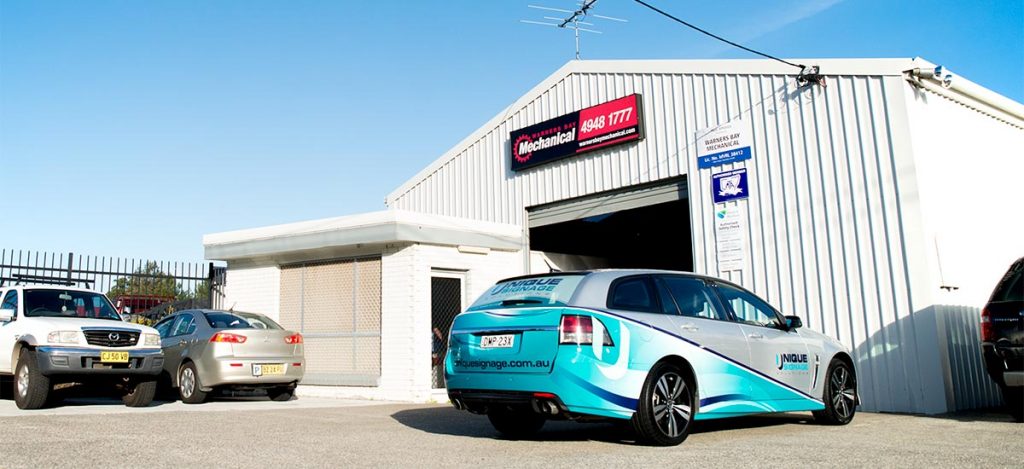
Fluids to check regularly.
1) Engine Coolant
Engine coolant (Or Antifreeze) is designed to transfer the heat created by the combustion cycle and disperse it through the cooling system of the engine. This system includes the water pump – which pumps the coolant through passages in the engine and the radiator – which transfers the heat from the fluid out into the atmosphere. It also provides heat for the in-car heater when switched on.
Coolant can come in different colours, the main two being green – for cast iron engines, and red for alloy-based engines. It’s important to use the correct colour coolant for the vehicle, as incorrect or mixing of the two can cause significant and expensive engine damage.
Normal life coolant is recommended to be changed every 3 to 5 years, depending on the vehicle and colour of the coolant. Some manufacturers have started to make use of “Long-life” coolants, which can be Blue, Green or Red. Long-life coolants can last up to 200,000km or 10 years, at which times the systems are flushed and coolant replaced.
If the vehicle is operated under abnormal conditions the cooling system and coolant may need to be serviced more often.
2) Engine Oil
The main lubricant vehicles use is engine oil. This oil provides proper lubrication of all the moving parts inside an internal combustion engine – to disperse heat and prolong the life of all components. It is essentially the lifeblood of the engine, and without it serious damage can be caused in a very short amount of time. There are also cleaning properties built into modern engine oils that prevent blockages and contaminants from restricting oil flow.
It’s important to replace your engine oil at regular intervals with the correct grade and specification for your engine, as oil breaks down and loses these properties over time.
Many modern European and diesel engines require certain additives which are present only in specific oil grades, and using the wrong specification can cause major and expensive engine and component damage.
The normal service interval can vary between 10,000km to 20,000km, depending on the vehicle, but may need to be changed more frequently if the vehicle is operated under abnormal conditions ie. 4wding, towing, racing, excessive stop-start driving.
3) Brake Fluid
The fluid is usually silicone-based, which does not compress, giving a solid pedal feel and an increased temperature rating. The downside to using this style of fluid is that it absorbs moisture from the air.
Constant braking causes massive amounts of heat to be generated by the braking components, which is then transferred into the fluid. If there is moisture in the fluid, this will decrease the temperature rating of the fluid and can result in a soft brake pedal and increased stopping distance.
Regular brake fluid changes ensure that a car’s braking system operates safely and effectively. Most manufacturers recommend brake fluid changes every 2 years, regardless of kilometres travelled, but it may need to be changed more frequently if the vehicle is operated under abnormal conditions.
4) Transmission Fluid
Transmission fluid operates on the same basis as engine oil. It provides lubrication for moving parts, heat transfer and, in the case of automatic transmissions, enables the vehicle to move. This fluid is designed to withstand enormous pressures and heat. Some transmissions incorporate a radiator, to allow heat transfer away from the moving parts inside the transmission.
Note: In some cases, the fluid does not need to be changed for the life of the vehicle.
Most manufacturers include transmission servicing in certain logbook services, but it may need to be changed more frequently if the vehicle is operated under abnormal conditions (Have dropdown box of abnormal with list of conditions. 4wding, towing, racing, excessive stop-start driving). Please check your vehicle logbook.
5) Clutch Fluid
Manual transmission vehicles use hydraulic clutch systems to transfer the application of the clutch pedal down to the gearbox and clutch assembly, allowing the driver to change gears smoothly and easily. These systems use the same silicone based fluid that the braking system uses, so the same principles apply.
Most manufacturers recommend replacement of clutch fluid every 2 years, regardless of kilometres travelled, but this may need to be changed more frequently if the vehicle is operated under abnormal conditions.




